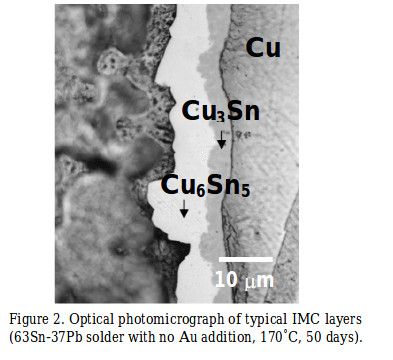I think the way solder works is probably fairly well understood, at least within the framework of physics / chemistry as we know it – a cursory search revealed this interesting photomicrograph*:

I'm sure there is much more info available on t'internet if one were to search more diligently.
Posted by pgk pgk on 08/12/2018 20:36:51:
A rate change of velocity is acceleration thus a body at constant speed (component of it's velocity) but with a rate change.. in this case a rate of change of direction is also an acceleration…?
Yes exactly, that's what Neil was saying I think. Things either stay at rest or carry on in a straight line unless an external force acts according to Newton's first law – so in the case of two bodies rotating about their centre of mass (barycentre) the force is always towards the centre, bending their natural trajectories.
It's a bit more complicated when straight lines become space-time geodesics of course!
Robin
*Evaluation of the Effects of Au Content on Intermetallic Compound Layer Growth
in Pb-Sn and Sn-Ag-Cu Solder Joints
D.F. Susan, P.T. Vianco, J.A. Rejent, J.J. Martin, and P.F. Hlava
Sandia National Laboratories, Albuquerque, NM USA Proceedings of the 3 International Brazing and Soldering Conference, April 24–26, 2006, Crowne Plaza Riverwalk Hotel, San Antonio, Texas, USA
Keith Hale.





